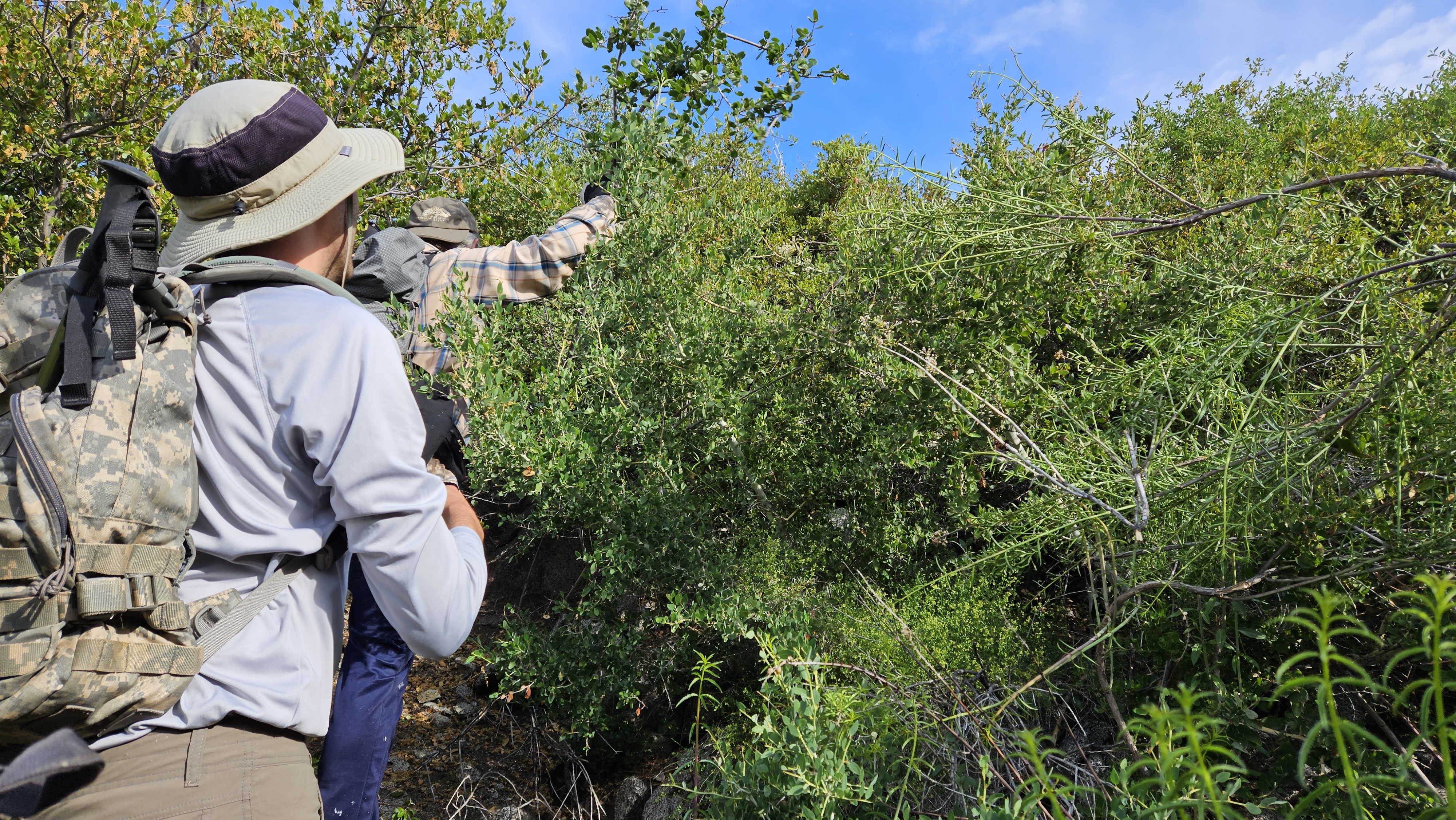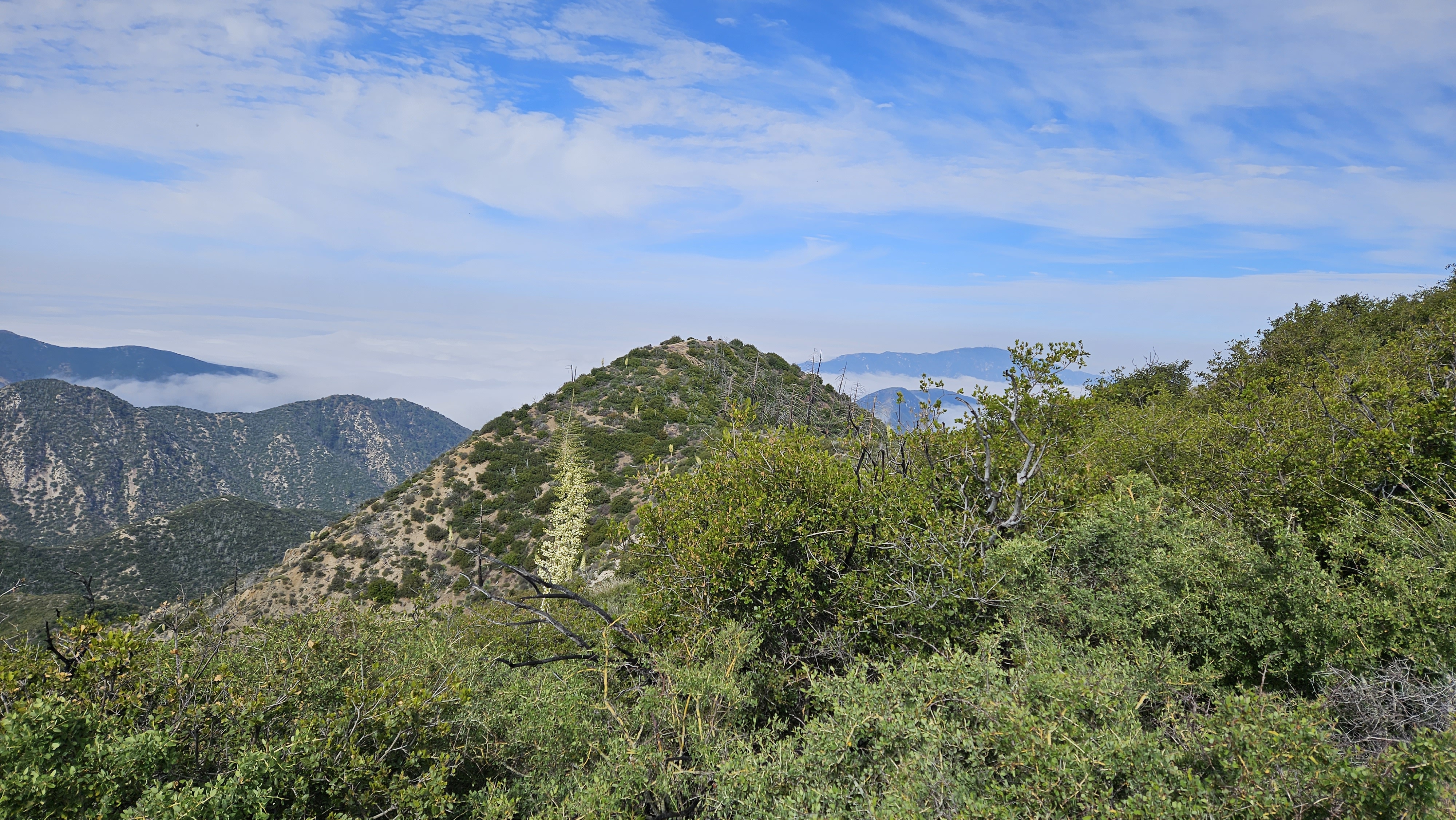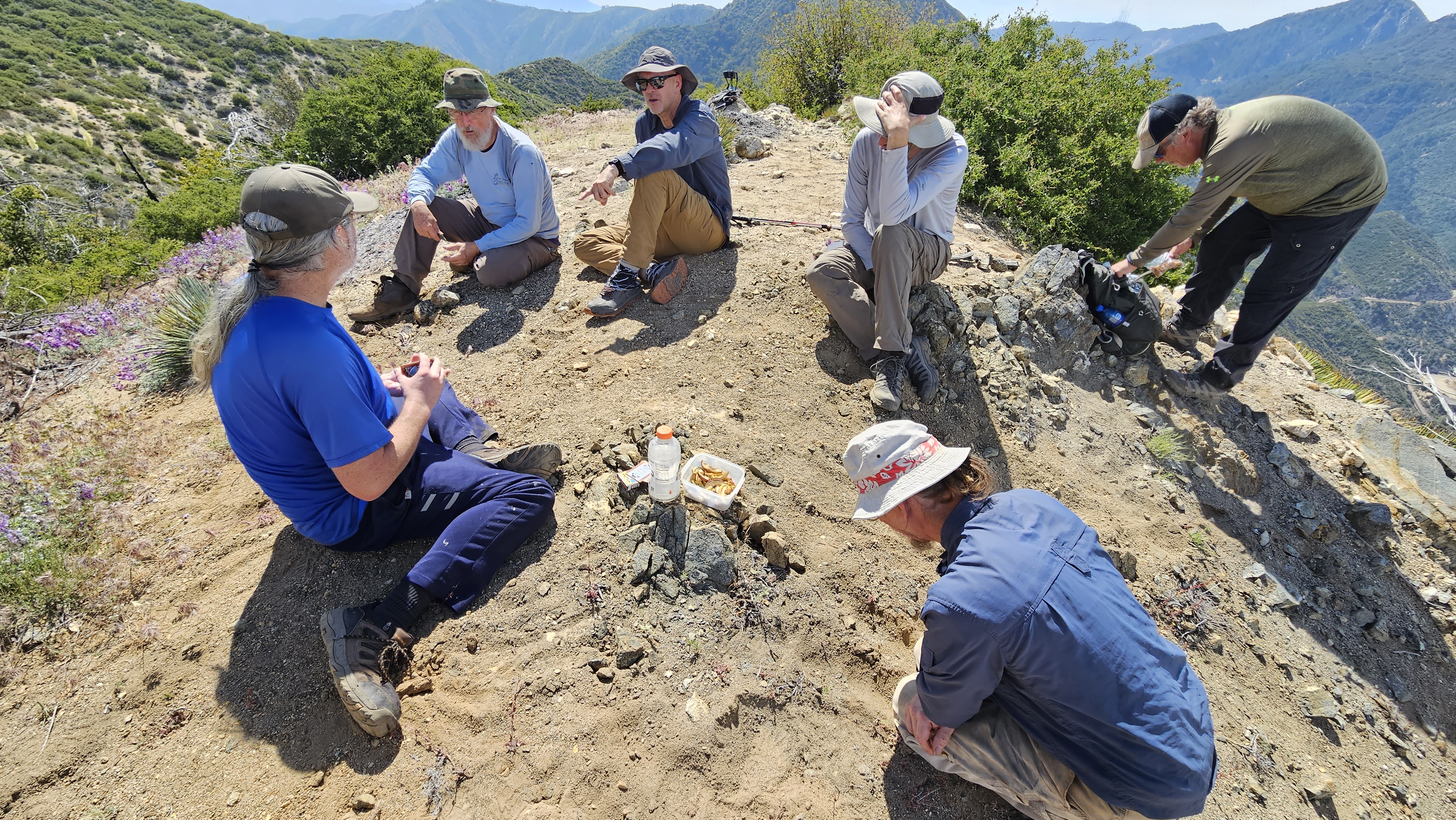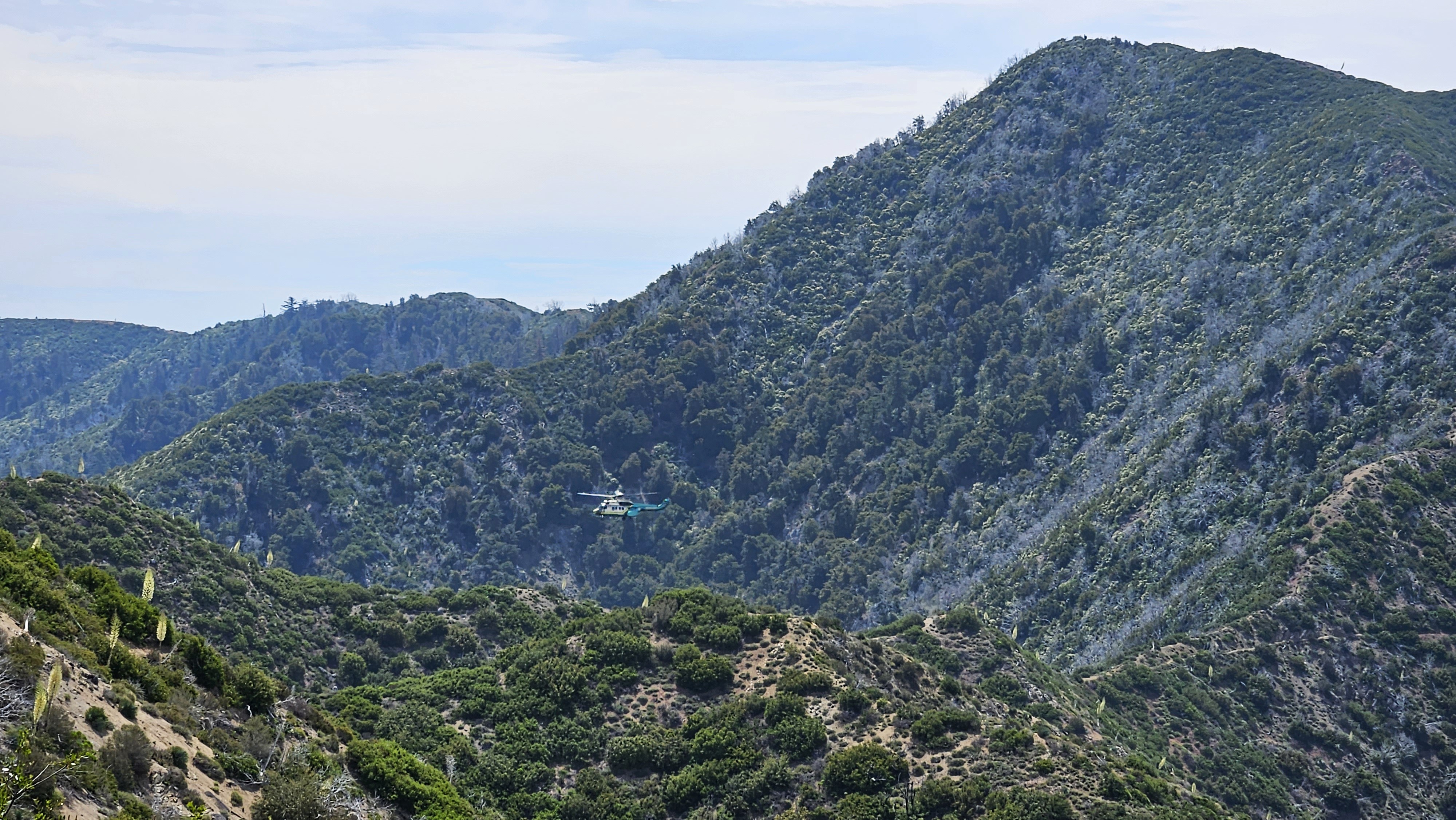The Search for Black Jack Peak
Posted: Sun Jun 11, 2023 6:32 am
In his 1895 book, History of Pasadena, Hiram Reid describes several peaks of the front range. One of them is called Black Jack Peak, which he locates in front of Strawberry Peak. Indeed, an alternate name for Black Jack, according to him, is Little Strawberry Peak.
Reid further describes Black Jack in his 1905 book, Hand-book of Pasadena.
Now, there is a problem with Reid's descriptions. While viewing the range from Pasadena, he mistook Disappointment for Strawberry. So, it's unclear where Black Jack should be exactly.
Historian John Robinson claimed in 1971 that Black Jack was actually Mt. Lawlor.
(100 Peaks Lookout, January 1971)
How Robinson arrived at this conclusion, I don't know. If he's interpreting Reid, then I disagree with his interpretation. I believe Lawlor is what Reid called Square-Top.
If Square-Top is not Lawlor, then what is it? It's not Mt. Markham, unless Reid listed the same peak twice under two different names, and also botched the location, since Markham is not between San Gabriel and Strawberry. No, I think Reid's description of Square-Top fits the reality of Lawlor, it being a lesser peak between San Gabriel and Strawberry, and also having a peculiarly flat and square-shaped summit. Furthermore, keep in mind that Black Jack was previously called Little Strawberry, and I fail to see a significant resemblance between Lawlor and Strawberry.
I do, however, think that Peak 5521 resembles Strawberry. Here is a view of both from the Colby Canyon Trail.
And this is how they look from the Strawberry Peak Trail.
By the way, here is a topo of the general search area, showing 5521 directly south, or in front, of Strawberry.
5521 closely matches Reid's description for Black Jack. It's essentially a smaller cone in front of Strawberry, simply a spur with a distinct pinnacle. Again, this doesn't seem to match Lawlor, which offers a flat top. It's also odd to think of Lawlor as a mere spur of Strawberry, since it has a respectable prominence and it sits upon the high ridge of the front range. Whereas 5521 truly is a simple spur that drops sharply into Colby Canyon.
Given this information, I needed to visit 5521 myself. Because what the hell (?!), as well as what sort of rock is up there? According to Reid, Black Jack's pinnacle should be composed entirely of a porphyritic rock that miners called "black spar." Despite having a kindergarten-level knowledge of rocks, maybe I could discover further evidence for 5521 being (or not being) Black Jack.
Based on prior scouting of the region, and looking at aerial imagery, I expected there to be a half mile of tough scrambling through tough brush, if I departed the Strawberry Peak Trail at an ideal spot. Thankfully I recruited several friends to join the effort. Nate knows rocks and offered to help identify whatever we found at the peak. Also from the forum, Uncle Rico, Tekewin and Jeff joined the party. And Scoops and Guy are fellow trail workers who generally enjoy hacking and trimming things.
Together, armed with loppers, machetes and clippers, we cut a half-mile route across the south face of Strawberry to summit 5521. We scrambled over a few boulder piles, but mostly trimmed our way through a lot of thorny and scratchy brush. Despite being dressed for battle, we took turns stumbling and getting impaled or scratched through our gloves and clothing.
Eventually we broke through to the spur ridge, and life became easier. The ridge top had a decent animal track, and we could weave our way to the summit without much resistance.
5521 had enough room for everyone to sit and enjoy a snack. It's a relatively narrow peak though, with a small rock outcropping at the top.
The west ridge, however, looked very rocky and difficult as it headed down toward Colby Canyon.
To the north was the grand, rocky face of Strawberry Peak.
Nate said that about a third of the rocks on 5521's summit qualify as porphyritic.
That's not exactly a perfect match with Reid's description. But it didn't prevent us from playing a game of blackjack on the peak and naming it Black Jack anyway. Yeah, we left a register up there, and if you can follow our route, you should have a fairly easy time reaching it--until the brush regrows.
Tekewin's GPX file
Reid further describes Black Jack in his 1905 book, Hand-book of Pasadena.
Now, there is a problem with Reid's descriptions. While viewing the range from Pasadena, he mistook Disappointment for Strawberry. So, it's unclear where Black Jack should be exactly.
Historian John Robinson claimed in 1971 that Black Jack was actually Mt. Lawlor.
(100 Peaks Lookout, January 1971)
How Robinson arrived at this conclusion, I don't know. If he's interpreting Reid, then I disagree with his interpretation. I believe Lawlor is what Reid called Square-Top.
If Square-Top is not Lawlor, then what is it? It's not Mt. Markham, unless Reid listed the same peak twice under two different names, and also botched the location, since Markham is not between San Gabriel and Strawberry. No, I think Reid's description of Square-Top fits the reality of Lawlor, it being a lesser peak between San Gabriel and Strawberry, and also having a peculiarly flat and square-shaped summit. Furthermore, keep in mind that Black Jack was previously called Little Strawberry, and I fail to see a significant resemblance between Lawlor and Strawberry.
I do, however, think that Peak 5521 resembles Strawberry. Here is a view of both from the Colby Canyon Trail.
And this is how they look from the Strawberry Peak Trail.
By the way, here is a topo of the general search area, showing 5521 directly south, or in front, of Strawberry.
5521 closely matches Reid's description for Black Jack. It's essentially a smaller cone in front of Strawberry, simply a spur with a distinct pinnacle. Again, this doesn't seem to match Lawlor, which offers a flat top. It's also odd to think of Lawlor as a mere spur of Strawberry, since it has a respectable prominence and it sits upon the high ridge of the front range. Whereas 5521 truly is a simple spur that drops sharply into Colby Canyon.
Given this information, I needed to visit 5521 myself. Because what the hell (?!), as well as what sort of rock is up there? According to Reid, Black Jack's pinnacle should be composed entirely of a porphyritic rock that miners called "black spar." Despite having a kindergarten-level knowledge of rocks, maybe I could discover further evidence for 5521 being (or not being) Black Jack.
Based on prior scouting of the region, and looking at aerial imagery, I expected there to be a half mile of tough scrambling through tough brush, if I departed the Strawberry Peak Trail at an ideal spot. Thankfully I recruited several friends to join the effort. Nate knows rocks and offered to help identify whatever we found at the peak. Also from the forum, Uncle Rico, Tekewin and Jeff joined the party. And Scoops and Guy are fellow trail workers who generally enjoy hacking and trimming things.
Together, armed with loppers, machetes and clippers, we cut a half-mile route across the south face of Strawberry to summit 5521. We scrambled over a few boulder piles, but mostly trimmed our way through a lot of thorny and scratchy brush. Despite being dressed for battle, we took turns stumbling and getting impaled or scratched through our gloves and clothing.
Eventually we broke through to the spur ridge, and life became easier. The ridge top had a decent animal track, and we could weave our way to the summit without much resistance.
5521 had enough room for everyone to sit and enjoy a snack. It's a relatively narrow peak though, with a small rock outcropping at the top.
The west ridge, however, looked very rocky and difficult as it headed down toward Colby Canyon.
To the north was the grand, rocky face of Strawberry Peak.
Nate said that about a third of the rocks on 5521's summit qualify as porphyritic.
That's not exactly a perfect match with Reid's description. But it didn't prevent us from playing a game of blackjack on the peak and naming it Black Jack anyway. Yeah, we left a register up there, and if you can follow our route, you should have a fairly easy time reaching it--until the brush regrows.
Tekewin's GPX file



